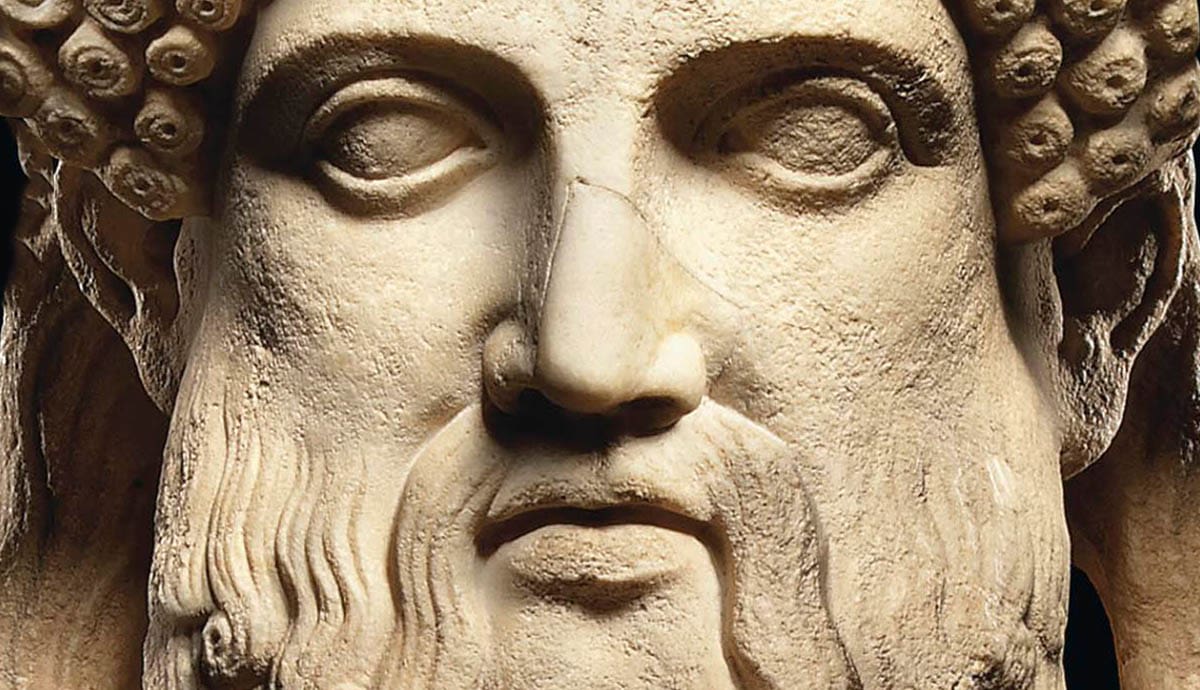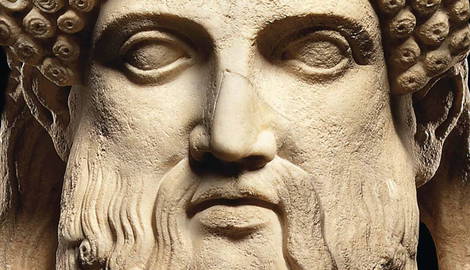
Hermes was counted among the 12 Olympian gods in Greek myth and was considered the divine messenger. With his winged sandals, he could pass between the divine and human realms and also travel into the underworld, making him a Chthonic god and soul guide. He was considered a divine trickster and the patron of travelers, thieves, and troublemakers. He gets embroiled himself in all sorts of mischief in surviving Greek myths. Let’s take a closer look at some of the most famous facts surrounding the life of the Greek god Hermes, one of the most exciting and varied characters in their mythology.
1. How the Greek God Hermes Stole a Herd of Sheep

Son of Zeus and Maia, the Greek god Hermes was mischievous from a young age. When he was still a baby wrapped in a blanket, Hermes crept out of his crib to cause some trouble. He stole his brother Apollo’s sacred herd of 50 cattle from Pieria, reversing their footprints so it appeared they were walking in the opposite direction. Hermes even wove himself a pair of beautiful adult sandals to walk in so anyone tracing his footprints would think he was an adult. These sandals later evolved to have wings as Hermes grew older.
Unfortunately, Zeus saw what Hermes was up to and hauled him into a hearing on Mount Olympus. To make amends, Hermes gifted Apollo a lyre he had fashioned out of a tortoiseshell, which could play the most spellbinding music.
This story contributed to Hermes’ reputation as a pastoral god. Many surviving images show him as a young man carrying a sheep on his shoulders. This representation may have influenced the idea of the “Good Shepherd” in early Christianity.
2. Hermes Could Move Between Realms

Hermes was one of only a few Greek gods that could travel freely between the different realms, including into the underworld. As messenger to the gods, he was responsible for delivering messages to and fro between the mortal and divine worlds, and he was able to do this thanks to his winged sandals. Hermes also spent much of his time in the underworld, helping guide the dead into Hades. Perhaps it’s no surprise then that Demeter asked Hermes to help her bring Persephone back to earth from the underworld when she was kidnapped by Hades.
3. Hermes Was a Chthonic and a Fertility God to the Ancient Greeks

Like many other Chthonic deities, in particular Persephone, Hermes was associated both with the underworld and fertility, which came from the ground. This is why the phallus was one of his major symbols. Erect phallus symbols were often placed at the entrance to households to encourage male fertility and the production of children.
4. Hermes’ Image Changed Over Time in Ancient Greece

The image and iconography of Hermes changed over time in ancient Greek art. During the Archaic Period (c. 800-480 BCE), he was usually depicted as a mature bearded man in the guise of a traveler. This was the image that commonly appeared on Hermai, which served as boundary markers, roadside markers, and grave markers, as well as votive offerings. In the Classical and Hellenistic periods, Hermes appeared as an athletic and beardless youth. He often appeared with a hat, known as a petasos, that was used by people in rural Greece. He was initially depicted with a winged cap in this style, or sometimes wings on his head. It was only in late artistic depictions that wings sprung from his sandals or even sometimes his ankles.
5. Hermes Was a Brilliant Inventor

The ancient Greeks credited Hermes with inventing some of the most remarkable and important tools in human civilization. These include writing and the alphabet (very useful for delivering messages), fire, dice, and musical instruments. As well as the tortoise shell lyre he gave to Apollo, Greek god Hermes also created the first ever set of pan pipes, or syrinx, which became the instrument of shepherds.
5. Hermes Destroyed the Monster Argos

One of the most terrifying tasks Hermes took on was slaying the monster Argos, who had many eyes and never slept. When Zeus had an affair with a mortal woman named Io, Zeus’s jealous wife Hera was furious. To hide Io from Hera’s wrath, Zeus transformed her into a cow to try and keep her safe. But Hera found Io, tied her to a tree, and placed her under the watch of Argos. Zeus asked Hermes to kill the beast, to release Io from this terrible fate. Hermes came up with a crafty plan, playing the most beautiful music that lulled Argos into a deep sleep. He was then able to slay Argos and set Io free.
6. Hermes Helped Perseus Slay Medusa

In Greek mythology, Hermes helped his half-brother Perseus to slay the Gorgon Medusa. He did this by directing Perseus to Medusa’s lair along with Athena. Hermes then let Perseus borrow his winged sandals so he could fly away as fast as possible once he had chopped off Medusa’s head. Thanks to Hermes’s amazing sandals, Perseus was also able to fly over the ocean and rescue Andromeda (his future wife) from being devoured by a sea monster.
7. He Carried a Staff with Two Snakes

The Greek god Hermes often carries a staff surrounded by two snakes, known as the caduceus. In one myth, Hermes was given this staff as a gift from Apollo to say thanks for the lyre. However, in another myth, Zeus gave Hermes the staff, which was surrounded by swirling white ribbons. When Hermes used the staff to separate two fighting snakes, the ribbons turned into snakes. The logo for the caduceus had two wings as a reference to Hermes’s flying sandals.
8. Hermes Was Known as Mercury in Roman Religion

When the Romans encountered the Greek god Hermes, as was their custom, they equated him to their god Mercury, who was also a messenger of the gods who guided souls to the underworld but was also the god of financial gain, commerce, eloquence, travelers, boundaries, luck, trick, thieves, and divination. The original god Mercury seems to have been heavily influenced by the Etruscan god Turms, but was syncretized with Hermes by the 4th century BCE.










